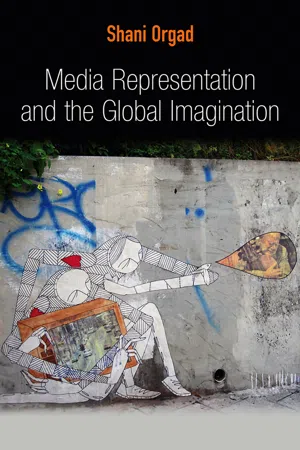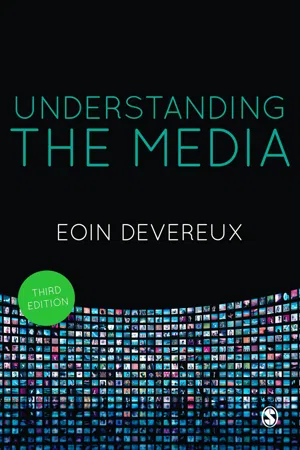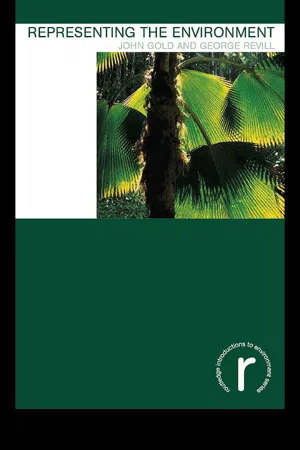Social Sciences
Representation of Social Class In The Media
The representation of social class in the media refers to how different social classes are portrayed in various forms of media, such as television, film, and advertising. This includes the depiction of stereotypes, values, and lifestyles associated with different social classes. Media representations can influence public perceptions and attitudes towards social class, and can either reinforce or challenge existing social hierarchies.
Written by Perlego with AI-assistance
Related key terms
Related key terms
1 of 4
Related key terms
1 of 3
3 Key excerpts on "Representation of Social Class In The Media"
- eBook - ePub
- Shani Orgad(Author)
- 2014(Publication Date)
- Polity(Publisher)
The extensive research on the role of media representations in the construction of national identity (see chapter 3) is typical of this literature. So, on the one hand, representations are seen as open to multiple readings, inherently ambivalent, and constantly changing. On the other hand, representations are seen as having ‘dominant’ ‘preferred’ meanings and carrying particular ideologies reinforcing specific ideas and values and excluding others, which works largely to reconstitute and sustain existing power relations. This contradiction corresponds to the contradictory character of the media landscape. The current complex, multi-channel media environment is conducive to change : it provides marginalized groups with a voice and a platform to represent themselves and to question and transform the authority of experts; it offers a dynamic context for an open and complex field of diverse and contesting representations. At the same time, the political economy of contemporary media is characterized by reproduction of capitalism and reinforcement of existing power relations : increasing control of media channels and platforms by the powerful few, manifested in the increasing trend towards cross-ownership and convergence. The democratization of the media and the proliferation of voices triggers attempts to reassert control and dominant narratives by powerful authorities, which suggests that as much as multiple, open meanings and change, media representations are about ‘dominant meanings’ and fixity - eBook - ePub
- Eoin Devereux(Author)
- 2013(Publication Date)
- SAGE Publications Ltd(Publisher)
Media ‘Re-presentations’ in an Unequal WorldChapter overviewThis chapter introduces you to the following:• The main issues surrounding the analysis of media content • Quantitative and qualitative content analysis • Media representations of poverty in the developed world and the Third World • Media representations of class, ethnicity, gender and sexuality • Media representations of the places in which the poor and excluded live.Key concepts• Media content• Representation/‘re-presentation’• Quantitative content analysis• Qualitative content analysis• Semiotic, discourse, frame and narrative analysis• Social structure• Stigmatization• Class, ethnicity, gender and sexuality• The ‘deserving’ and the ‘undeserving’ poorIntroductionIn this chapter the main issues involved in approaching the analysis of media content are discussed. In an attempt to further our discussion of ideology and discourse, an emphasis is placed upon examining how media content represents unequal power relationships in the social world. Media content is socially constructed. It is not fixed but rather changes over time. At any one time, it contains many clues as to the make-up of the social structure that determines so much about all of our lives. Media content matters because it is within media content that the shaping and framing of our understanding and perceptions of the social world takes place. Media content provides us with the many ‘scripts’ necessary for us to negotiate and make sense of the everyday social contexts in which we find ourselves. Media content informs us about the personal and the political. Understanding media content is crucial in terms of reaching a more informed understanding of how we form views, opinions and attitudes about groups who are considered ‘other’. The ‘other’ may comprise of a range of ‘out’ groups in any society. They may be the poor, the homeless, members of the LGBT community, the colonized, the underclass, residents of stigmatized neighbourhoods, ex-prisoners, the mentally ill and immigrants, for example. Those who are othered are regularly constructed as a threat to the moral and social order. Media content not only shapes our understanding of the social world but may also influence our actions (or inaction) about issues concerning fairness, justice and equality. - eBook - ePub
- John R. Gold, George Revill(Authors)
- 2004(Publication Date)
- Routledge(Publisher)
3 Representations in context
This chapter:- examines strategies for studying the audience’s consumption of environmental representations;
- considers the contexts in which representations are produced;
- explores the concepts of cultural politics, ideology and discourse;
- provides a range of basic approaches for the study of the discursive role of representations in society.
Audiences and the media
The media occupy a central place in any study of environmental representations. Traditionally, ‘media’ meant the ‘media of mass communication’, by which technologically based systems transmitted content (or messages) through print, broadcasting, posters or film to remote and scattered audiences. More recently, though, the idea of what constitutes ‘media’ has expanded dramatically. If media transmit content in symbolic form to an audience, then architecture, clothes, recorded music, food packaging, jewellery and skin tattoos are legitimately media. Moreover, many new media no longer conform to the established model. The convergence of television, computers, wireless technology, digital networks and mobile telephones brings patterns of use that bear little resemblance to the ‘fireside’ consumption of early radio and television programmes.The word ‘consumption’ needs clarification. We stressed the importance of the audience’s active participation in shaping the meaning of environmental representations at the end of Chapter 2 . In this context, it might seem that media research has much to offer, given that audience studies have preoccupied media researchers since the 1920s (McQuail, 1997). Sadly, however, the findings of that research have proven continually disappointing. Researchers have often attempted to trace direct and measurable audience response to communication, usually finishing by either showing no discernible effects or recognising that any effects are very difficult to assess and quantify. The problem lies partly with conceptual understanding and partly with methodology. In terms of the former, researchers reluctantly accept that the media do not function in isolation and that, in most circumstances, any impact that they might have is itself mediated
Index pages curate the most relevant extracts from our library of academic textbooks. They’ve been created using an in-house natural language model (NLM), each adding context and meaning to key research topics.
Explore more topic indexes
Explore more topic indexes
1 of 6
Explore more topic indexes
1 of 4


